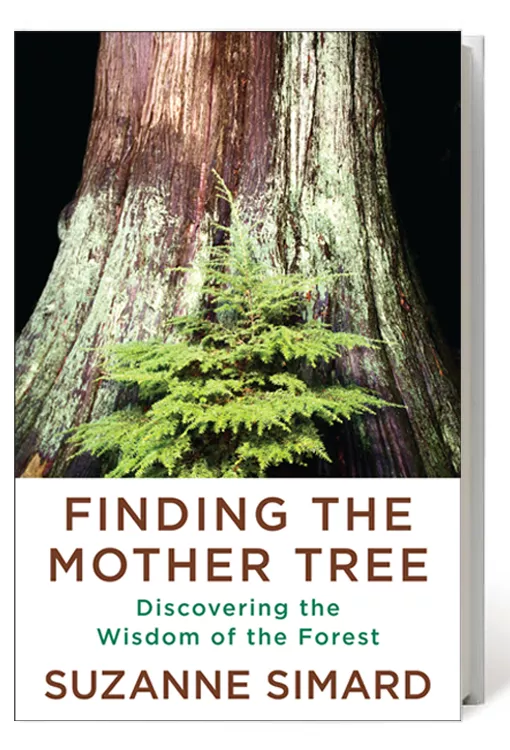Trees Have Something to Teach Us About Life in Partnership
A review of "Mother Nature"

In the old-growth forests of British Columbia where she had grown up—a rich reality of firs and cottonwoods and "silky fungal threads fanning through the clay," of "blond-colored earlywood, the spring cells plump with water"—Suzanne Simard started puzzling over the relationship between roots, fungi, and the forest. During a tenure at the Canadian Forest Service, she embarked on a series of breakthrough experiments that challenged the prevailing orthodoxy of natural resource management: that forests are a collection of individual trees stoically isolated in their own silos, competing to survive. This Western viewpoint was pervasive; the reality couldn't be any more different.
Forests, Simard confirmed, are sophisticated societies in which trees communicate and cooperate with one another, sharing carbon and nutrients that flow from the biggest and oldest—the "mother trees"—to the youngest and those in need. This elaborate social network is marked by partnership, not competition—with trees "interconnected by mycorrhizal fungi in a complex pattern that fueled the regeneration of the entire forest," Simard writes in Finding the Mother Tree: Discovering the Wisdom of the Forest (Knopf, 2021).
Simard comes from a family of foresters. Their culture of regenerative logging had given way to industrial clearcutting methods that treated forests as a cash crop. When Simard began challenging the assumptions behind those methods, a male-dominated field of policymakers was quick to reject her research and its implications for the lucrative logging industry.
The richness of the tree ecology about which Simard writes is reflected in her equally lush prose. "The [mushroom] cap's underside was like a sundial of radiating pores. Each oval-shaped opening housed minuscule stalks built to discharge spores like sparks from a firecracker." To step into these descriptions, with their precision and breadth, is to be transported into another world—and be called to save it.
This article appeared in the Summer quarterly edition with the headline "Mother Nature."
 The Magazine of The Sierra Club
The Magazine of The Sierra Club



